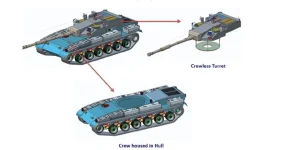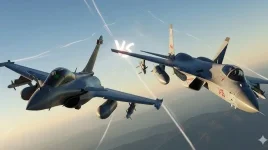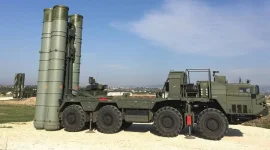- Views: 4K
- Replies: 41

The Indian Air Force's (IAF) long-held goal of achieving a 42-squadron strength, a benchmark set in the 1980s to counter a simultaneous two-front war with China and Pakistan, may no longer be necessary, according to Air Marshal Anil Khosla (Retd.), former Vice Chief of Air Staff.
In a recent interview on The Gaurav Arya Podcast, Khosla argued that advancements in aviation technology and the changing geopolitical landscape have significantly altered India's defense needs.
The 42-squadron figure was initially conceived when the IAF relied on aircraft with limited capabilities. The 1962 war with China and subsequent conflicts with Pakistan highlighted the need for a large number of aircraft to compensate for their shorter ranges, smaller payloads, and less sophisticated technology. This ensured operational continuity with enough aircraft for rotation, maintenance, and to account for combat losses.
However, the IAF has since modernized its fleet with aircraft like the Sukhoi Su-30MKI, Dassault Rafale, and HAL Tejas. These advanced jets boast superior speed, agility, and avionics, including cutting-edge radar systems and precision-guided munitions.
"Today's fighters can perform air-to-air combat, ground strikes, reconnaissance, and electronic warfare missions, often in a single sortie," Khosla explained, emphasizing the multi-role capabilities of modern aircraft. This versatility allows the IAF to achieve greater operational effectiveness with fewer aircraft.
Citing the Rafale as an example, Khosla highlighted its ability to conduct deep strikes, engage in dogfights, and perform maritime missions. Similarly, the Su-30MKI, the IAF's mainstay fighter, is capable of long-range strikes, air defense, and close air support. The indigenous Tejas Mk1A, though still in its early stages of induction, is expected to further enhance the IAF's multi-role capabilities.
IAF's current squadron strength, which stands at approximately 30-32, falling short of the 42-squadron target. This deficit is attributed to the phasing out of older MiG-21 and MiG-27 aircraft without timely replacements. Delays in the Tejas Mk1A program and the slow pace of acquiring additional Rafales have compounded the issue. Furthermore, reliance on aging platforms like the MiG-29 and Jaguar, which require extensive maintenance and upgrades, adds to the strain on the IAF.
While the 42-squadron goal may be outdated, the IAF still faces challenges in maintaining a sufficient number of state of the art squadrons to effectively address its current security needs. Balancing the induction of new-generation fighters with the modernization of existing fleets remains crucial for the IAF to maintain its combat readiness in a rapidly evolving geopolitical environment.




